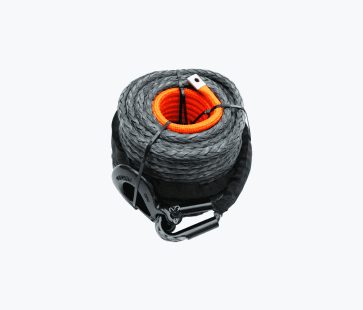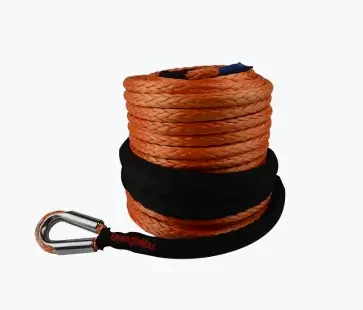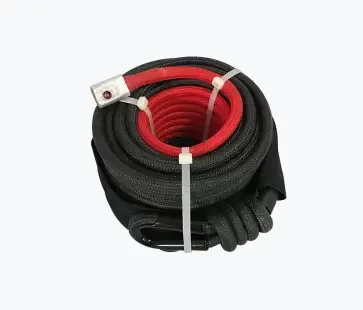Winch rope, an integral component in various mechanical and outdoor activities, combines strength and flexibility to perform under challenging conditions. Whether used in industrial operations, off-roading adventures, or marine applications, the right winch rope, especially when it’s a synthetic winch rope, can mean the difference between success and failure. This comprehensive guide delves into the world of winch ropes, offering insights into their types, usage, maintenance, and safety, with a particular focus on the advantages and applications of synthetic winch rope.
Types of Winch Ropes
Winch ropes can be classified into three distinct categories, each with unique characteristics and applications. These are classic winch rope, pre-stretched winch rope, and braided winch rope.
Classic Winch Rope: This type represents the traditional design in winch ropes. Often made from materials like steel, these ropes are known for their robustness and durability. They are particularly favored in settings where high strength and resistance to wear are paramount. However, they tend to be heavier and require careful handling due to the risk of injury from frayed wires or snap-back.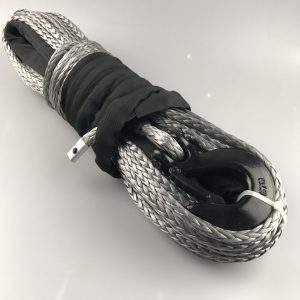
Pre-Stretched Winch Rope: As the name suggests, these ropes undergo a pre-stretching process, enhancing their strength and reducing their likelihood of stretching under load. This feature makes them particularly suitable for applications where maintaining a consistent rope length is critical, such as in precise lifting and towing operations. Pre-stretched ropes can be made from either synthetic materials or steel, combining the benefits of traditional materials with improved performance.
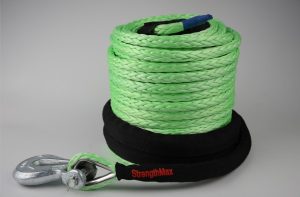
Braided Winch Rope: Known for its exceptional flexibility and resistance to tangling, braided winch ropes are a popular choice in applications that require easy handling and maneuverability. These ropes are typically made from synthetic fibers, which provide a good balance of strength and lightweight properties. The braided construction not only contributes to the rope’s durability but also enhances its resistance to abrasion and UV damage, making it a versatile choice for both industrial and recreational use.
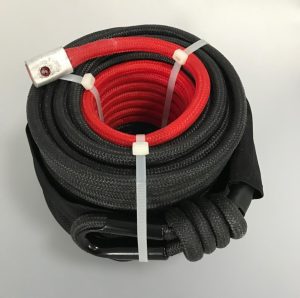
Each type of winch rope has its specific advantages and ideal use cases, making it important to choose the right one based on the requirements of the task at hand.
Factors to Consider When Choosing a Winch Rope
Selecting the best synthetic winch rope involves considering factors like load capacity, environmental exposure, and the specific requirements of the task at hand. The rope’s breaking strength, resistance to elements like UV rays and moisture, and compatibility with the winch drum are crucial considerations.
Winch Rope in Outdoor Recreation
For outdoor enthusiasts, particularly in off-roading and mooring, winch ropes, including ATV winch rope and UTV winch rope, are indispensable tools. They offer reliability in challenging terrains and conditions, aiding in vehicle recovery and secure anchoring. These specialized ropes cater specifically to the needs of ATV and UTV owners, ensuring their adventures are safe and unimpeded by the unpredictable outdoors.
Winch Rope in Emergency and Rescue Operations
In emergency and rescue operations, the reliability of winch ropes is critical. These applications demand ropes that combine strength, durability, and flexibility, often under extreme conditions, to ensure the safety and effectiveness of rescue efforts.
DIY Winch Rope Projects
Winch ropes, with their indispensable combination of strength, versatility, and innovation, are essential tools across various sectors. As technology progresses, the capabilities and applications of these ropes are set to expand further, solidifying their importance in numerous operations. Integrating the crucial aspect of how to tie the winch rope to the hook, it becomes evident that choosing the right winch rope, maintaining it with care, and strictly adhering to safety guidelines are key factors that ensure its optimal performance and longevity. This comprehensive approach, from selection to knot-tying techniques, ensures that winch ropes meet the demands of modern use while maintaining safety and efficiency at the forefront.
FAQ
1. What are the main differences between synthetic and steel winch ropes?
The primary differences between synthetic and steel winch ropes lie in their material composition, weight, flexibility, and safety aspects. Synthetic ropes are made from high-strength polyethylene fibers, making them lightweight and easier to handle. They float in water, are more resistant to UV damage, and are less dangerous if they snap, as they don’t store as much kinetic energy. In contrast, steel cables are heavier, more durable, and less prone to abrasion. They are ideal for high-temperature environments but can cause severe injury if they break under load due to their stored kinetic energy.
2. How often should winch ropes be replaced?
The frequency of winch rope replacement depends on usage intensity, environmental conditions, and signs of wear and tear. Regular inspections are crucial. For heavy use, a yearly inspection is recommended, and replacement should occur if any signs of fraying, kinks, rust (in steel ropes), or significant wear are evident. For less frequent or lighter use, inspect the rope every couple of years and replace it as needed.
3. Can winch ropes be repaired if they are damaged?
The reparability of a winch rope depends on the type and extent of damage. Minor fraying or damage in synthetic ropes can sometimes be repaired by carefully trimming the frayed ends or using heat to seal them. However, significant damage, such as deep abrasions, core damage, or severe fraying, usually requires replacement. Steel ropes with minor damage can sometimes be repaired using clamps or splicing, but this can weaken the rope.
4. Are there specific safety equipment recommended when using winch ropes?
Yes, when using winch ropes, especially steel cables, it’s essential to wear protective gear, including heavy-duty gloves to prevent hand injuries, safety glasses to protect eyes from flying debris, and a hard hat if there’s a risk of falling objects. It’s also advisable to use a winch line damper, which can help absorb some of the energy in case of a rope failure.
5. How do environmental factors affect the choice of winch rope?
Environmental factors play a significant role in choosing the right winch rope. Synthetic ropes are more suited to wet, muddy, and corrosive environments as they are resistant to water and chemicals. They are also better for UV exposure. Steel cables, however, are preferable in high-temperature settings or when there’s a risk of contact with sharp objects, as they are more resistant to heat and abrasion.
6. What are some common mistakes to avoid when installing a winch rope?
Common mistakes to avoid when installing a winch rope include not maintaining proper tension during the installation, leading to uneven spooling; mixing up the direction of the wind; not checking the compatibility of the rope with the winch drum; and neglecting to inspect the rope and drum for damage before installation. Always follow the manufacturer’s guidelines for installation and ensure the rope is properly aligned and tensioned on the drum.

thispower
Let's start working together now!
Years of professional OEM experience to meet customised needs. Fill in the enquiry form to cooperate with us and enjoy high quality service.
